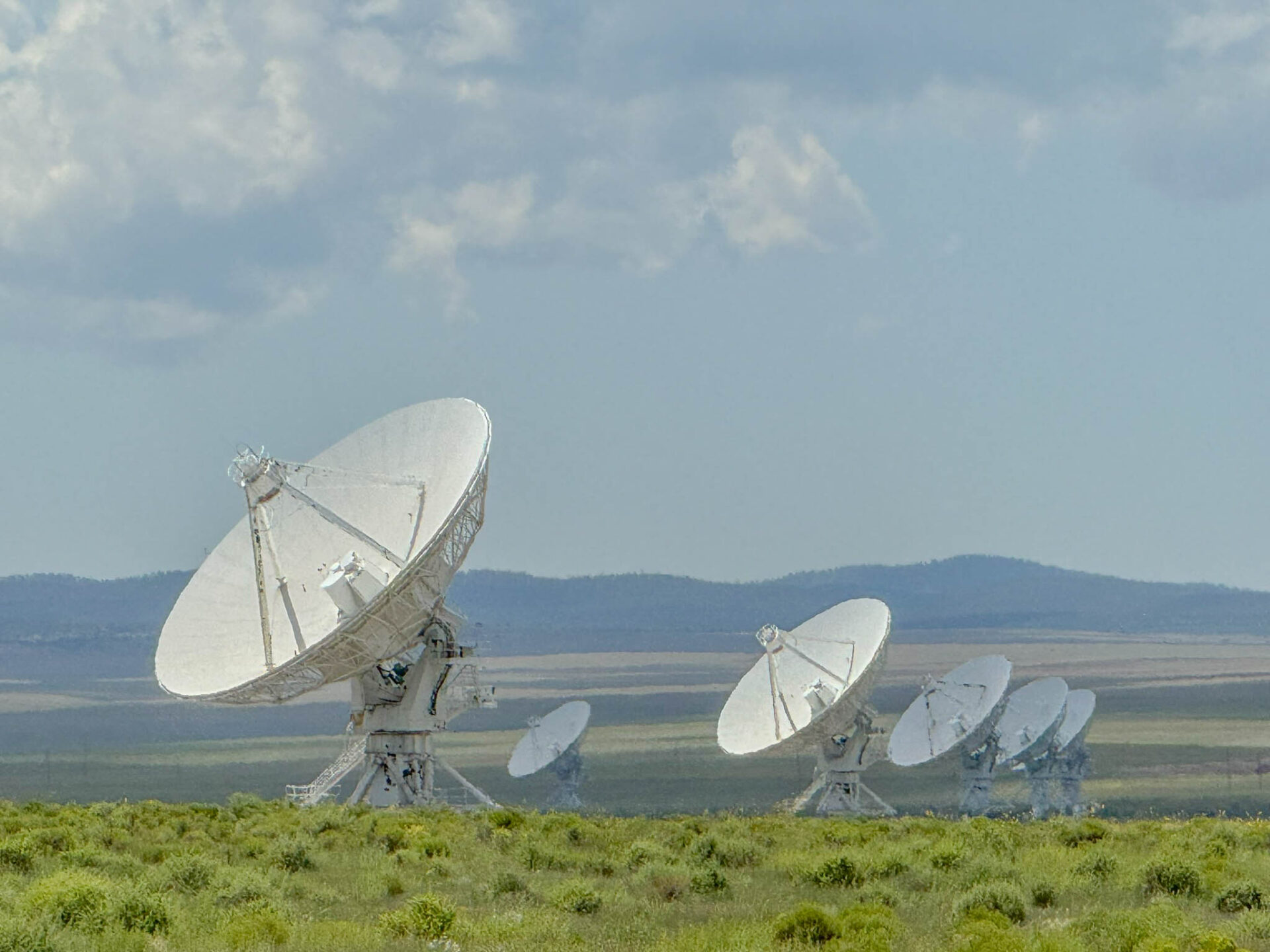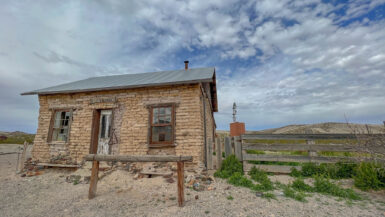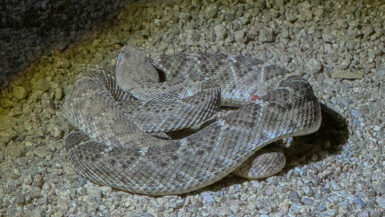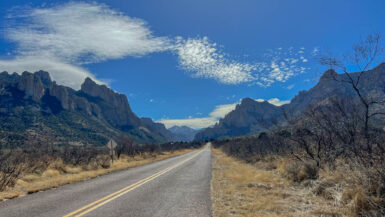Discover New Mexico’s Very Large Array (VLA)—a world-class radio telescope where science meets silence. Learn how to visit, what to expect, and why this cosmic listening post is worth the detour.
Tucked away in the windswept high desert of central New Mexico, where jackrabbits outnumber people and the silence stretches for miles, you’ll find a place that looks like it beamed in from a sci-fi film set—but it’s very real, and very extraordinary. This is the Karl G. Jansky Very Large Array (VLA), a sprawling ensemble of twenty-seven massive white radio dishes—each one 82 feet across—poised like cosmic sunflowers on the Plains of San Agustin. Together, they rotate in silent choreography, scanning the skies for the faintest whispers from deep space.
Operated by the National Radio Astronomy Observatory (NRAO) under a cooperative agreement with the U.S. National Science Foundation (NSF), the VLA is one of the most advanced radio telescopes on the planet. It’s a place where cutting-edge astrophysics meets the stark, surreal beauty of the desert Southwest—a destination that should be on your radar if you’re planning a trip through the area.
To help you make the most of your own adventure to this mind-bending marvel in the heart of New Mexico, here are a few tips I picked up along the way.


Table of Contents
What Exactly Is the Very Large Array?
Let’s start with the basics. The Very Large Array (VLA) isn’t your typical telescope—it doesn’t capture visible light like the kind you might point at the moon from your backyard. Instead, it “listens” to the universe, detecting radio waves emitted by some of the most exotic characters in the cosmos: quasars, pulsars, black holes, and galaxies so far away that their signals have been traveling for billions of years just to reach us. Think of it as humanity’s high-tech attempt to eavesdrop on the universe’s most fascinating gossip.
Here’s how it works: the VLA is made up of 27 massive radio antennas, each one 82 feet across, spread out in a giant Y-shaped formation on the Plains of San Agustin. These antennas aren’t locked in place—they roll along railroad tracks so the configuration can be adjusted. When fully extended, the array spans over 22 miles, giving it the resolution of a telescope with an unimaginably huge lens. To put it in perspective, the VLA can detect something as small as a golf ball in Los Angeles—from New York City. Not bad for a bunch of antennas in the desert.
The magic behind this mind-blowing resolution comes from a technique called interferometry. It allows astronomers to combine signals from all 27 dishes into one unified image, effectively turning the array into a single, super-sensitive ear trained on the sky. It’s like having 27 people all listening for the same barely audible whisper, then teaming up to decode what was said. Clever? Absolutely. And in this vast, windswept landscape, where silence reigns supreme, it’s the perfect place to tune in to the secrets of the cosmos.



How It All Began: From Static to Stargazing
The Very Large Array’s story starts in the 1970s—a golden age of scientific ambition, moon missions, and shag carpeting. Construction broke ground in 1973, and by 1980, the VLA was officially up and running. It was named after Karl G. Jansky, a Bell Labs engineer who—while trying to clean up transatlantic phone calls in the 1930s—accidentally discovered something far more interesting: radio waves coming from the heart of the Milky Way.
That unexpected find kicked off the entire field of radio astronomy. In classic scientific fashion, Jansky set out to fix a problem and ended up uncovering a whole new way to observe the universe. Fast forward a few decades, and that spark of curiosity helped shape what would become one of the world’s most powerful astronomical instruments.
Today, the Very Large Array is part of the National Science Foundation’s suite of cutting-edge facilities. The Very Large Array is operated by the National Radio Astronomy Observatory (NRAO), which is managed by Associated Universities, Inc. (AUI)—a nonprofit consortium that includes academic heavyweights like Columbia, Cornell, Harvard, Johns Hopkins, MIT, Princeton, the University of Pennsylvania, the University of Rochester, and Yale. Despite its national affiliation, the VLA serves the international scientific community, offering access to researchers from around the world. Observing time on the array is awarded on a competitive basis, with proposals evaluated solely on scientific merit—regardless of nationality, institution, or research sponsors. If your science is solid, you’re in the running.
And the VLA hasn’t stayed stuck in the 1980s. Thanks to the Expanded Very Large Array (EVLA) project—a massive upgrade completed in the 2010s—the site swapped out its vintage analog systems for state-of-the-art digital tech. Think of it as giving a classic muscle car a futuristic engine and dashboard. With dramatically improved sensitivity, resolution, and frequency coverage, this high-desert powerhouse now helps researchers explore everything from fast radio bursts and dark energy to the magnetic fields threading distant galaxies. In other words: it’s still listening, and still learning—only now, with way better ears.




The VLA in Pop Culture
If this all sounds a little familiar, you might be recalling the 1997 film Contact, based on Carl Sagan’s novel, featuring Jodie Foster and Matthew McConaughey. Jodie Foster’s character, an astronomer searching for extraterrestrial signals, spends much of the film wandering among the giant white dishes of the VLA. (Spoiler: they do, in fact, hear something.)
While the VLA doesn’t officially search for alien life, the idea of massive antennas quietly listening to the universe is too tempting for Hollywood to ignore. And honestly, when you’re standing out there—sky above, silence all around—it does feel like you’ve wandered onto an X-Files set.
In fact, Contact is just the most famous movie example. The VLA has also made appearances in Independence Day, Armageddon, Terminator Salvation, and 2010: The Year We Make Contact (not to be confused with Contact, though we wouldn’t blame you if you did). Directors love the VLA when they need a quick visual shorthand for “Yes, serious science is happening here.”
It’s also been featured in documentaries and science specials, further cementing its status as one of the most recognizable scientific backdrops in film. Not bad for a place that makes its living listening in silence.

So… Have We Heard from Aliens Yet? 👽
Has the VLA picked up anything weird? Not in the “little green men calling collect” kind of way—but it has detected some strange and unexplained phenomena. We’re talking Fast Radio Bursts (FRBs)—incredibly powerful, millisecond-long flashes from deep space that have scientists scratching their heads—and unusual cosmic signals that sometimes turn out to be things like neutron stars, black holes, or something we haven’t quite figured out yet. But just for the record, the VLA hasn’t picked up anything that even hints at intentional communication from intelligent alien life.
Could it detect such a message? Absolutely—if it was strong, in the right frequency, and pointed our way. But even then, it would take rigorous verification and global collaboration to confirm. So no, the VLA hasn’t received a “Greetings, Earthlings” transmission… but if it ever does, you won’t need a telescope to see that headline.
Visiting the VLA: Your Guide to Antennas, Silence, and Stargazing
Getting There:
The VLA is situated approximately 50 miles west of Socorro, New Mexico, along US Highway 60. It’s about a 2-hour drive from Albuquerque and 3 hours from Santa Fe. If you’re planning a road trip through the state, it makes for an excellent detour between Albuquerque and Silver City or while exploring the Gila Wilderness or Pie Town.
Hours and Admission:
The VLA is open to the general public 7 days a week ONLY from 9 a.m. to 4 p.m. No one is allowed on site after 4 p.m. without prior authorization. The VLA Visitor Center includes a small museum, gift shop, restrooms, and a short documentary narrated by none other than Jodie Foster. Admission is $6 for adults, $5 for seniors, and free for kids under 17. Be sure to check the VLA website for updated hours.
Tours:
The self-guided walking tour is excellent, with interpretive signs guiding you right up to the base of one of the massive dish antennas. On Saturdays, the VLA offers public guided tours at 10:00 a.m., 12:00 p.m., and 2:00 p.m., with no reservations required beyond your admission ticket. Just show up at the Visitor Center 30 minutes before your preferred tour time. Each tour lasts about an hour and offers behind-the-scenes insight into how the array works and what it’s listening for. During off-peak seasons, tour availability may shift—so be sure to check the VLA website for the most current schedule of tours.
In addition to regular tours, the VLA hosts a variety of special events throughout the year, including star parties, talks by astronomers, and science festivals for all ages. These public outreach events often feature expanded access, interactive activities, and chances to connect directly with researchers. You can find the current lineup at the NRAO events page.
Pro Tips:
- Bring water and snacks. There’s nowhere to grab food on-site, and at 7,000 feet, you dry out faster than you’d think—especially under that classic New Mexico sun. Even if you don’t feel sweaty, your body’s working harder up here, so stay ahead of it and keep yourself fueled and hydrated.
- Wear a hat and sunscreen. There’s very little shade during the walking tour.
- Expect minimal cell service. This place is remote for a reason—it needs radio silence.
- Check road conditions in winter. Snow isn’t common, but it does happen.
- Silence is golden. Electronic devices should be in airplane mode and powered off to prevent interference with observations. While you’re at it, make time to just stand still and listen. Out here, silence has its own soundtrack.




















What Else Is Nearby?
Chances are, you’re not going to spend the whole day at the VLA. But that’s part of the appeal—this remote region is surrounded by weird, wild, and wonderful places that are well worth the extra detour.
Pie Town, New Mexico
Yes, Pie Town is real. And yes, there’s actual pie. About 20 miles west of the VLA along Highway 60, this offbeat little stop lives up to its name. I recently put together a blog post with everything you need to know before you roll into Pie Town—fork in hand.
Datil Well Recreation Area and Campground
Just a short (15-20 minute) drive west, Datil Well Recreation Area offers a peaceful spot for picnicking, hiking, or even camping under the stars. The Datil Well Historic Trail is a short loop with views of the plains and surrounding mountains. It’s an easy way to stretch your legs and soak in the solitude. On a clear night (and out here, they’re mostly clear), you can lie back and stare into a sky that seems almost too big to be real. This is dark sky territory, ideal for your own DIY astronomy session.
Bosque del Apache National Wildlife Refuge
If you’re heading out from Socorro, this world-class birding spot is well worth the detour. Bosque del Apache National Wildlife Refuge comes alive in the fall and winter, when thousands of sandhill cranes, snow geese, and other migratory birds fill the skies. With a scenic auto loop, walking trails, and an excellent visitor center, it’s a must-see for nature lovers.
And even if birds aren’t your thing, the landscape alone makes it worth the stop—lush wetlands framed by desert scrub, with sunrises and sunsets that look like they were made for your camera. I’ve put together a blog post with the inside scoop on visiting San Antonio, New Mexico, the gateway to Bosque del Apache.
Magdalena & the Magdalena Ridge Observatory
About 20 miles east of the VLA sits another scientific spot that flies under most travelers’ radar. The Magdalena Ridge Observatory, perched at 10,600 feet, focuses on high-resolution optical astronomy and hosts occasional public events. Star parties and open houses are limited, so check their website before you go.
The town of Magdalena makes a nice base if you’re exploring this stretch of Highway 60. It’s a laid-back, arts-influenced community with a few welcoming cafes, galleries, and lodges—just enough to fuel up, slow down, and soak in a bit of small-town New Mexico. I’ll be writing a blog post about Magdalena soon, so stay tuned for a closer look at what makes this little town worth the stop.
Why the VLA Is Worth the Detour
Standing in the shadow of these gleaming giants on the Plains of San Agustin, it’s hard not to feel small in the best possible way. The Very Large Array is more than a marvel of engineering—it’s a symbol of humanity’s insatiable curiosity. Out here, amid the wind, dust, and silence, brilliant minds have come together from all over the globe in pursuit of a single mission: to listen.
And in a world that often favors shouting, listening feels revolutionary.
Whether you’re a scientist, a stargazer, a road-tripper, or just someone trying to find peace beneath a sprawling sky, the VLA delivers. It’s one of those rare places that stirs both awe and serenity, and you walk away feeling a little more connected to something bigger than yourself.
Thought for the Week
This week’s quote comes from Carl Sagan (1934 – 1996). Carl was an astronomer, author, and the unofficial poet laureate of the cosmos. Few people have done more to make the vastness of space feel personal, and fewer still could wrap science, wonder, and humility into a single sentence quite like he could.
One of his most enduring lines fits beautifully with the spirit of the Very Large Array. It’s a quiet but powerful reminder that discovery doesn’t always come with fireworks. Sometimes, it comes from long hours, careful listening, and the patience to sift through signals in the silence. The VLA does just that—turning its giant ears to the sky, day after day, listening for something incredible.
Something to think about the next time you’re out under the stars, wondering what’s out there—and who might be wondering the same about us.
“Somewhere, something incredible is waiting to be known”.
— Carl Sagan
Thanks for reading and happy travels!
Mark (The New Mexico Travel Guy)

Mark Aspelin, The New Mexico Travel Guy (www.newmexicotravelguy.com), is a travel writer, conservation biologist, project manager, and author of two books. He’s visited over 100 countries and all 50 U.S. states—just enough to land in the Travelers’ Century Club and make choosing a favorite place nearly impossible. He’s currently on a questionable mission to visit every town in New Mexico (there are over 500) and write a story about each one, with plans to wrap it up sometime before his early to mid 100s. Mark balances his writing with conservation and project work from his home base in the East Mountains near Albuquerque, New Mexico.





Leave a reply